Preah Ko’s central section is full of treasures that have inspired Cambodian artists since it was built in the late 9th century. But this guardian is trying to keep intruders out.
Let’s try to sneak past this dude and get to Preah Ko’s inner treasures.
But not so fast–he’s actually one of the treasures.
In Sanskrit, he’s called a dvarapala–a gate guard. Hindu and Buddhist temples all over Asia have them to keep out the riffraff. But he has features that are common in Khmer sculpture from Preah Ko’s time:
1. A body that’s both strong and gracefully proportionate.
2. A calm and aloof facial expression.
3. A dignified bearing. He’s not snarling or saber-rattling. He’s too confident. He knows that he can wax anyone’s behind just by blowing on him.
Khmer society was elitist with a capital E. Its economy was based on rice farming–Angkor had no merchant class and it didn’t use money. Kings, nobles and elite priests marshaled peasant farmers and slaves to work in the fields. This guardian projects the aristocratic strength and confidence that the Khmer nobles saw in themselves.
Preah Ko also has many female guardians, called Devata. They also mix strength, elegance and aloofness.
These guardians are arranged symmetrically–one on each side of a door:
This symmetry makes them seem even stronger and more elegant.
But these guardians, and the doors and columns, only occupy the lower part of Preah Ko’s shrines. More spiritual worlds preside in the upper sections. We’ll aspire for them soon, but I find that sneaking past the guards is iffy. They express the Khmer leaders’ self representations when their state was becoming a major power so well that I can’t stop admiring them. But since neither presidential candidate looks this good, I’ll linger here.

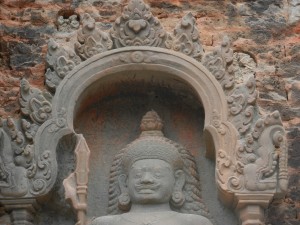
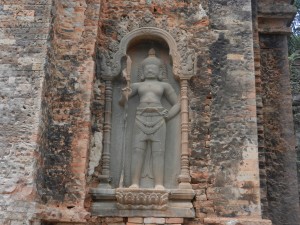
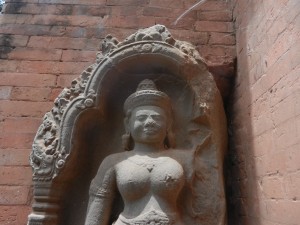
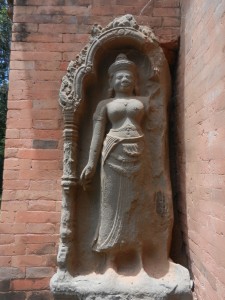
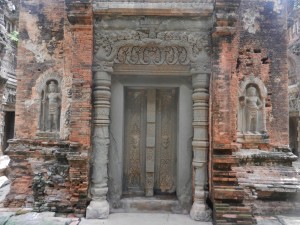
Comments on this entry are closed.